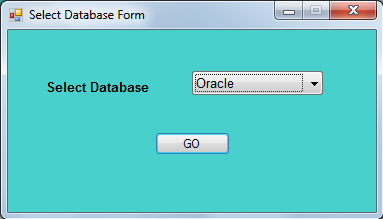You can add keywords to method parameters in C#.
The three of them are: ref, out and params.
ref
The ref keyword can be used to pass arguments by reference. That means the parameter can be changed in the method and the changed value will be retained when control passes back to the calling method. Ref parameters need to be initialized before passing.
Example
public class RefMethodParameterDemo
{
//The ref keyword causes arguments to be passed by reference.
//The effect is that any changes made to the parameter in the method will
//be reflected in that variable when control passes back to the calling method.
public static void RefParamMethod1(ref int num1, ref int num2)
{
num1 = 20;
num2 = 40;
}
static void Main()
{
//Need to be initialized before passing as argument
int n1 = 0;
int n2 = 0;
//Both the method definition and the calling method
//must explicitly use the ref keyword.
RefParamMethod1(ref n1, ref n2);
Console.WriteLine("n1 = " + n1);
Console.WriteLine("n2 = " + n2);
Console.Read();
}
}
o/p
n1 = 20
n2 = 40
out
The out keyword can be used to pass arguments by reference.
This is similar to the ref keyword, except that out doesn’t require the variable be initialized before being passed.
Example
class OutMethodParameterDemo
{
//A method with out parameter is useful when you want a method to return multiple values.
//The method definition must explicitly use the out keyword
//The method is required to assign a value before the method returns.
public static void OutParamMethod1(out int num1, out string str1)
{
num1 = 20;
str1 = "Hi I am out";
}
static void Main()
{
//No need to initialize the variable before passing
int n1;
string s1;
//Both the method definition and the calling method must explicitly use the out keyword
//The out keyword causes arguments to be passed by reference.
OutMethodParameterDemo.OutParamMethod1(out n1, out s1);
Console.WriteLine(n1);
Console.WriteLine(s1);
Console.Read();
}
}
o/p
20
Hi I am out
params
The params keyword lets you create a method parameter that takes an argument where the number of arguments is variable.
When you don’t know the exact number of arguments that will be passed in a method, then you can declare the method parameters using the params keyword.
Example
public class ParamsParameterDemo
{
//The params keyword lets you specify a method parameter that
//takes an argument where the number of arguments is variable.
public void ParamsMethod1(params int[] numlist)
{
for (int i = 0; i < numlist.Length; i++)
Console.WriteLine(numlist[i]);
Console.WriteLine();
}
//In a method declaration, no additional parameters are permitted after the params keyword
public void ParamsMethod2(params string[] strlist)
{
for (int i = 0; i < strlist.Length; i++)
Console.WriteLine(strlist[i]);
Console.WriteLine();
}
//Only one params keyword is permitted in a method declaration
public void ParamsMethod3(params object[] objlist)
{
for (int i = 0; i < objlist.Length; i++)
Console.WriteLine(objlist[i]);
Console.WriteLine();
}
static void Main()
{
ParamsParameterDemo p1 = new ParamsParameterDemo();
//Passing many integer values
p1.ParamsMethod1(1, 7, 19, 25);
//Passing Array as an argument
int[] arr1 = { 5, 7, 9, 20, 16,22 };
p1.ParamsMethod1(arr1);
//Passing a string array
string[] strarr1 = { "Mona", "Tony", "Jia" };
p1.ParamsMethod2(strarr1);
//Passing any datatype(objects)
p1.ParamsMethod3(12, 'C', "Remo");
Console.Read();
}
}
o/p
1
7
19
25
5
7
9
20
16
22
Mona
Tony
Jia
12
C
Remo
Related articles
- Programming Interview 6: Find repeated chars in string C# (hectorea.wordpress.com)













